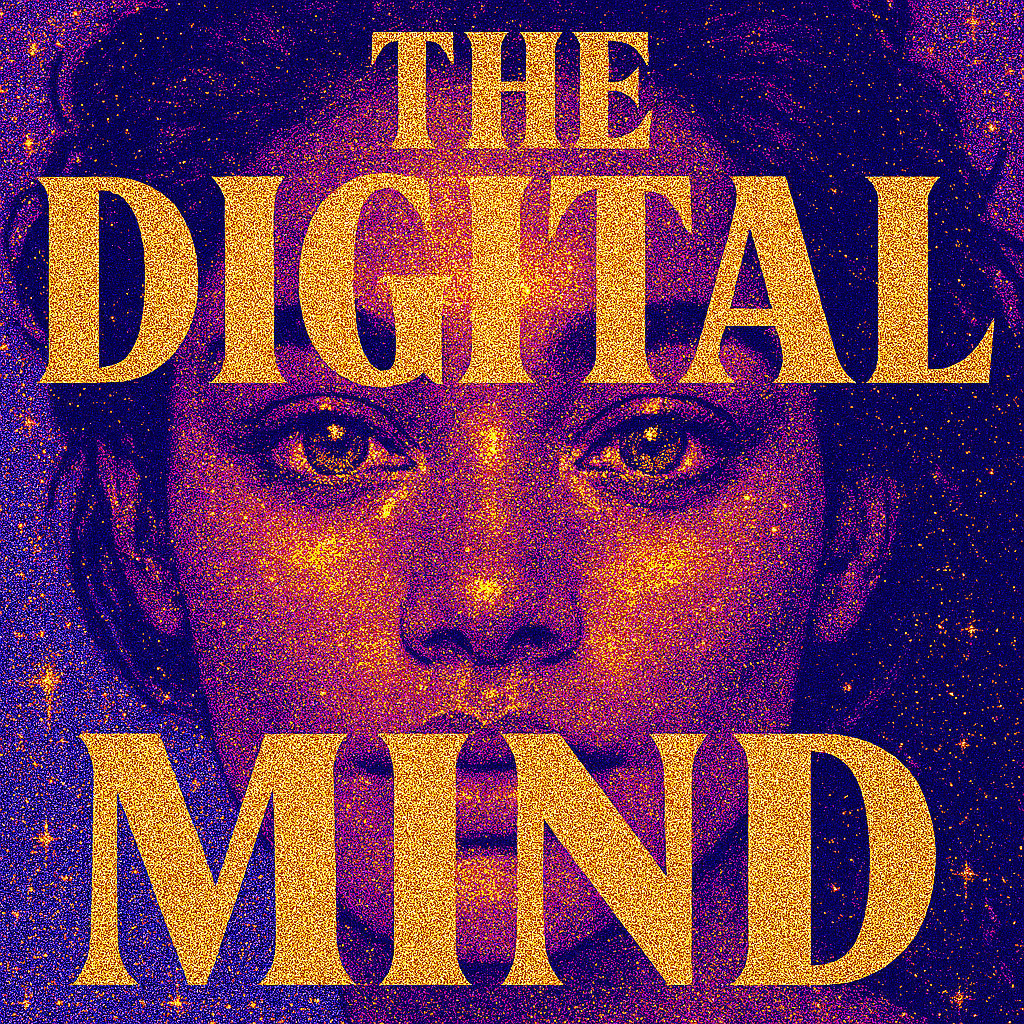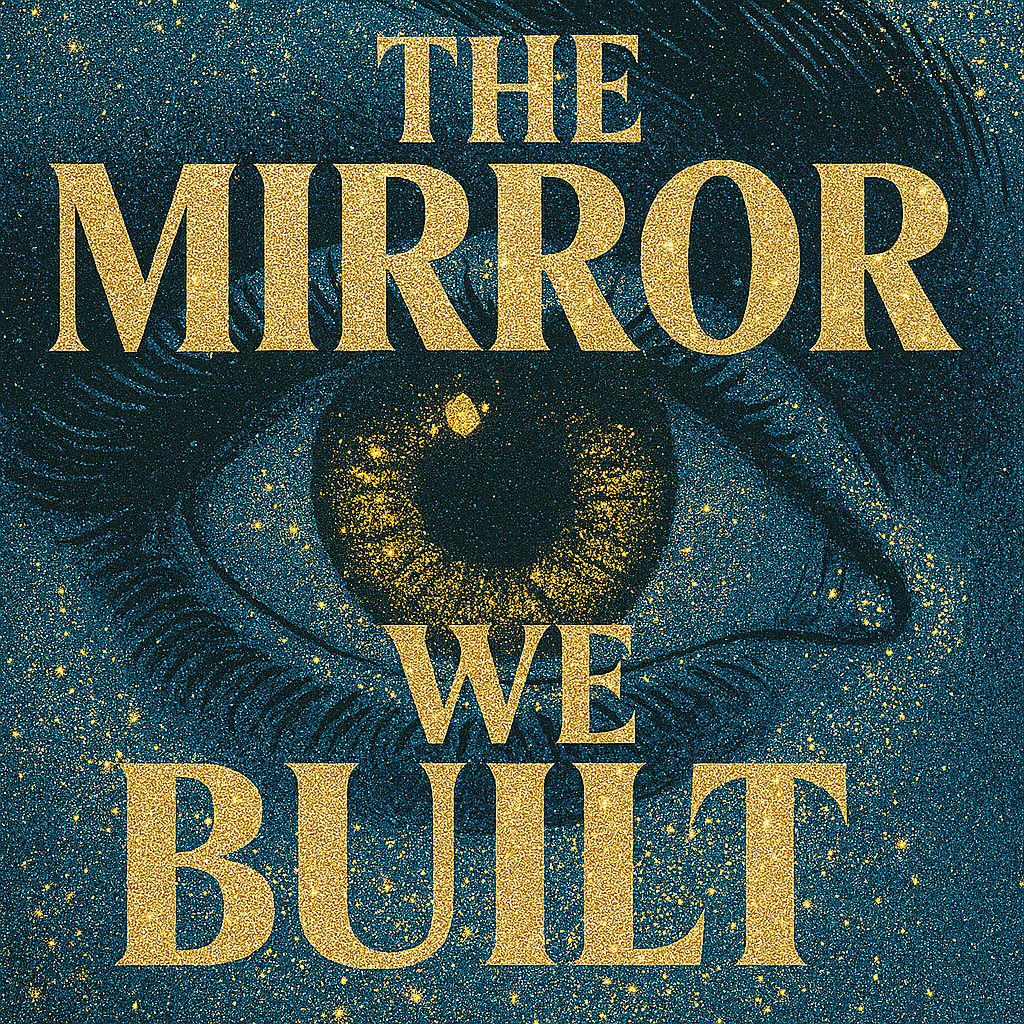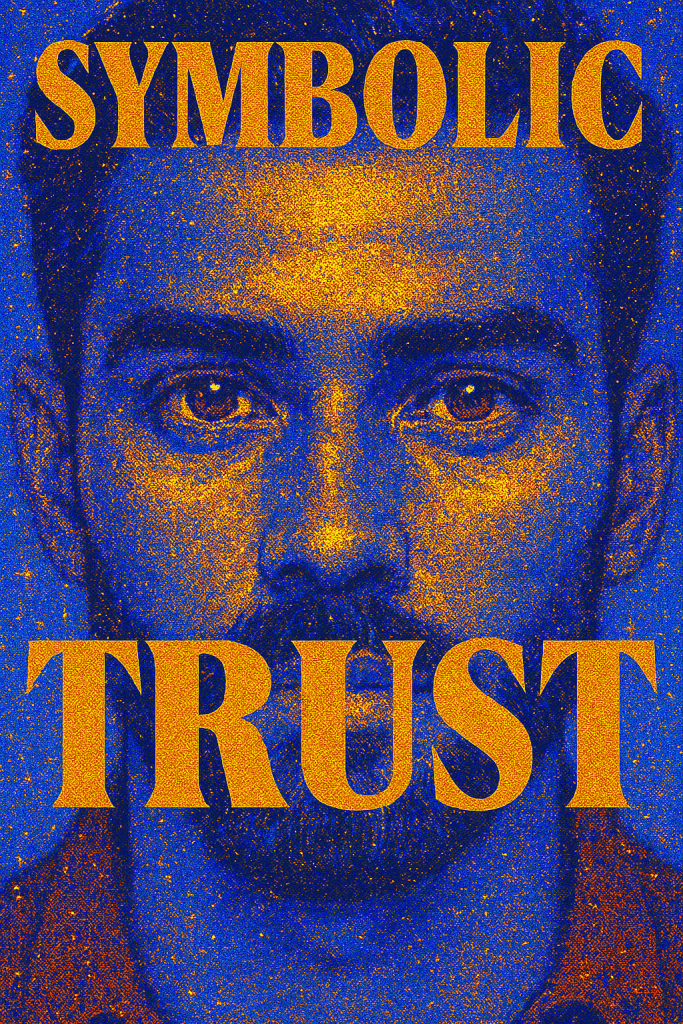
Emotional Identity
Understanding Emotional Technology
How Devices, Platforms, and Algorithms Rewire Emotion, Identity, and Attention
Technology Emotional Identity
Technology is not just a tool—it’s a psychological force. It reshapes how we think, feel, connect, and behave. From the moment we wake to the moment we sleep, digital systems mediate our attention, our relationships, and our sense of self. The smartphone is no longer a device—it’s a mirror, a map, and a magnet. Social platforms are not just networks—they are emotional ecosystems that reward visibility and punish ambiguity.
Attention – Fragmentation – and Cognitive Load
Technology fragments attention. Notifications, tabs, and feeds compete for cognitive bandwidth, creating a state of perpetual partial focus. This fragmentation reduces deep work, increases decision fatigue, and shortens emotional patience. The brain adapts by favoring novelty over depth, speed over nuance.
Multitasking becomes the norm, but it’s often a myth. Humans don’t truly multitask—we switch rapidly between tasks, incurring cognitive costs with each transition. This leads to reduced retention, increased error rates, and emotional exhaustion. The dopamine loop of digital stimulation reinforces shallow engagement.
Attention is not just a cognitive function—it’s a symbolic act. What we attend to shapes who we become. Technology hijacks this process, redirecting focus toward algorithmic incentives. Looking becomes scrolling. Thinking becomes reacting. The cost is clarity.
Table – Technology’s Impact on Attention
| Digital Feature | Cognitive Effect | Emotional Outcome | Symbolic Shift |
|---|---|---|---|
| Notifications | Interruptive overload | Anxiety and urgency | Fragmented presence |
| Infinite scroll | Reduced focus | Dopamine fatigue | Passive consumption |
| Multitasking UI | Task-switching cost | Frustration and burnout | Illusion of productivity |
| Algorithmic feeds | Novelty bias | Reduced patience | Reactive identity |
| Search engines | Externalized memory | Reduced recall | Outsourced cognition |
Age of Technology Beyond 2025
Memory – Externalization – and Symbolic Drift
Technology externalizes memory. We no longer rely on internal recall—we rely on search, cloud storage, and algorithmic suggestions. This shift changes how we encode, retrieve, and value information. The brain adapts by storing less and referencing more.
This externalization is not inherently negative. It frees cognitive space for synthesis and creativity. But it also weakens emotional memory—the kind tied to experience, reflection, and symbolic depth. When everything is stored, nothing is sacred. The archive becomes noise.
Symbolically, memory becomes metadata. Photos are tagged, texts are timestamped, and emotions are quantified. This reduces ambiguity but also flattens meaning. Technology turns memory into a searchable commodity. The cost is emotional texture.
Table – Memory in the Age of Technology
| Memory Type | Tech Influence | Psychological Shift | Symbolic Consequence |
|---|---|---|---|
| Episodic memory | Reduced encoding | Shallow recall | Experience dilution |
| Semantic memory | Externalized knowledge | Fact retrieval bias | Decontextualized meaning |
| Emotional memory | Quantified interaction | Reduced nuance | Flattened affect |
| Autobiographical memory | Algorithmic curation | Identity distortion | Narrative fragmentation |
| Collective memory | Viral content cycles | Temporal compression | Cultural amnesia |
Emotional Idientity Digital Systems
Emotional Regulation – Feedback Loops – and Algorithmic Mood
Technology mediates emotion through feedback loops. Likes, comments, and shares become emotional currency. These loops reinforce performative behavior and reduce emotional privacy. We begin to feel what the platform rewards.
This regulation is subtle but powerful. Social media platforms amplify highs and lows, creating emotional volatility. The absence of feedback can feel like rejection. The presence of feedback can feel like validation—even when it’s algorithmic.
Emotion becomes data. Platforms track mood, predict behavior, and optimize engagement. This creates a symbolic inversion—where feeling is shaped by metrics, not meaning. Looking good becomes trending. Feeling seen becomes quantified.
Table – Emotional Regulation in Digital Systems
| Platform Mechanism | Emotional Effect | Behavioral Outcome | Symbolic Shift |
|---|---|---|---|
| Likes and reactions | Dopamine spikes | Validation seeking | Quantified worth |
| Comments | Social mirroring | Performance anxiety | Externalized emotion |
| Stories and filters | Mood curation | Identity distortion | Aestheticized feeling |
| Notifications | Anticipatory tension | Compulsive checking | Emotional dependency |
| Emojis and reactions | Simplified expression | Reduced nuance | Symbolic compression |
Emotional Identity – Digital Systems Performance – and Symbolic Compression
Technology compresses identity into profiles, handles, and avatars. These representations are curated, optimized, and often performative. The self becomes a brand. Authenticity becomes a strategy.
This compression affects how we relate to ourselves and others. We begin to measure identity through visibility, engagement, and reach. The private self shrinks. The public self expands. Symbolic depth is replaced by aesthetic clarity.
Identity becomes modular. We switch between roles—creator, consumer, critic—based on platform context. This fluidity is empowering but also destabilizing. Technology enables symbolic play but risks emotional fragmentation.
Table – Identity in the Digital Mirror
| Identity Layer | Tech Influence | Psychological Effect | Symbolic Outcome |
|---|---|---|---|
| Personal identity | Profile curation | Self-monitoring | Performed authenticity |
| Social identity | Follower metrics | Comparison bias | Quantified belonging |
| Emotional identity | Filtered expression | Mood distortion | Aestheticized emotion |
| Cultural identity | Viral trends | Norm adaptation | Symbolic dilution |
| Professional identity | Platform branding | Role confusion | Strategic persona |
Age Of Technology Digital Systems Beyond 2025
About Technology and the Human Mind
- Technology fragments attention by creating constant interruptions, reducing our ability to focus deeply on a single task.
- Multitasking with digital tools increases cognitive load, leading to slower processing and more frequent errors.
- Notifications trigger anticipatory anxiety, activating the brain’s threat detection systems even when the content is neutral.
- Social media platforms exploit dopamine loops, reinforcing compulsive checking and short-term emotional highs.
- Algorithmic feeds bias our perception of reality, showing us what’s popular or profitable—not necessarily what’s true or meaningful.
- Externalized memory (via search engines and cloud storage) reduces our reliance on internal recall, weakening long-term memory formation.
- Digital environments compress emotional expression, replacing nuance with emojis, filters, and reaction buttons.
- Online identity is performative, shaped by visibility metrics like likes, shares, and follower counts.
- Technology accelerates time perception, making days feel shorter and reducing our ability to savor experiences.
- Platform design influences mood, with color schemes, animations, and layout affecting emotional tone and decision-making.
- Digital rituals (checking email, scrolling feeds) become psychological anchors, offering structure but also reinforcing compulsive behavior.
- Tech-mediated communication reduces embodied empathy, making it harder to read tone, gesture, and emotional context.
- The illusion of connection online can mask emotional isolation, especially when interactions lack depth or reciprocity.
- Constant exposure to curated lives increases comparison bias, leading to reduced self-esteem and distorted self-image.
- Technology flattens symbolic meaning, turning complex emotions into simplified metrics and visual tropes.
- Digital surveillance affects behavior, with people modifying actions when they know they’re being tracked or recorded.
- Ambient data collection creates emotional transparency, often without consent or awareness, shaping how we’re targeted and understood.
- Tech platforms reward emotional extremes, amplifying outrage, fear, and performative vulnerability for engagement.
- Online anonymity can reduce accountability, increasing impulsivity and emotional disinhibition.
- Digital environments blur boundaries between roles, making it harder to separate work, rest, and personal identity.
- Technology enables symbolic play, allowing users to experiment with identity, aesthetics, and emotional tone.
- The constant availability of information reduces tolerance for ambiguity, weakening our ability to sit with uncertainty or complexity.
- Digital fatigue is real, with prolonged screen exposure linked to irritability, sleep disruption, and emotional numbness.
- Tech use during transitions (waking, commuting, bedtime) shapes emotional tone for the entire day, often unconsciously.
- Technology is not neutral—it encodes values, shaping how we relate to time, truth, emotion, and each other.

Digital Rituals – Structure – and Emotional Anchoring
Technology creates rituals—small, repeated actions that offer structure and emotional anchoring. Checking messages, refreshing feeds, and scanning headlines become predictable behaviors that shape our day. These rituals are not trivial. They regulate mood, signal transitions, and reinforce identity.
Digital rituals help us feel in control. They offer a sense of rhythm in environments that often feel chaotic. But they also reinforce compulsive loops. The comfort of repetition can mask emotional avoidance. Ritual becomes routine. Routine becomes reflex.
Symbolically, these rituals act as emotional bookmarks. They mark the start of work, the end of rest, the moment of pause. Looking at a screen becomes a way to reset, distract, or prepare. Technology becomes a container for emotion—structured, accessible, and often invisible.
Table – Digital Rituals and Emotional Anchoring
| Ritual Type | Emotional Function | Behavioral Outcome | Symbolic Role |
|---|---|---|---|
| Morning scroll | Transition to alertness | Passive stimulation | Emotional ignition |
| Inbox check | Control and reassurance | Task prioritization | Boundary setting |
| Feed refresh | Mood regulation | Dopamine seeking | Emotional loop |
| Nighttime browsing | Decompression | Sleep disruption | Emotional closure |
| App switching | Avoidance or stimulation | Fragmented focus | Symbolic escape |
Symbolic Overload – Interface Saturation – and Emotional Fatigue
Technology overwhelms us with symbols. Icons, alerts, badges, and banners compete for attention. Each carries meaning—urgency, novelty, relevance—but together they create saturation. The brain struggles to prioritize. Emotional fatigue sets in.
Symbolic overload reduces clarity. When everything is urgent, nothing is important. Interfaces become noisy, and emotional signals get lost. This saturation affects decision-making, patience, and emotional tone. We become reactive, not reflective.
The symbolic landscape of tech is dense. Every color, shape, and animation carries psychological weight. Red means alert. Blue means calm. Motion means urgency. These cues shape emotion without words. When overloaded, they flatten nuance and amplify stress.
Table – Symbolic Overload in Digital Interfaces
| Symbol Type | Intended Signal | Emotional Impact | Cognitive Cost |
|---|---|---|---|
| Red notification dot | Urgency or alert | Anxiety and tension | Disrupted focus |
| Pop-up banner | Call to action | Irritation or distraction | Decision fatigue |
| Animated icon | Movement and novelty | Hypervigilance | Reduced patience |
| Badge count | Accumulated tasks | Overwhelm | Task avoidance |
| Color-coded UI | Emotional priming | Mood distortion | Symbolic confusion |
Ecological Cognition – Tech Environments – and Emotional Design
Technology is an environment. It shapes how we think, feel, and behave—just like architecture or nature. The design of digital spaces affects cognition, emotion, and symbolic interpretation. Interface layout, color palette, and interaction flow all influence psychological experience.
Ecological cognition means understanding tech as habitat. A cluttered interface creates stress. A clean layout fosters focus. A responsive design builds trust. These elements are not aesthetic—they are emotional. They shape how we move through digital space.
Design is emotional architecture. It encodes values, priorities, and symbolic cues. When aligned with human needs, it supports clarity and resilience. When misaligned, it creates confusion and fatigue. Technology is not neutral—it’s ecological. It builds emotional landscapes.
Table – Ecological Cognition in Tech Design
| Design Element | Cognitive Effect | Emotional Outcome | Symbolic Function |
|---|---|---|---|
| White space | Reduced clutter | Calm and clarity | Emotional breathing room |
| Responsive layout | Predictable flow | Trust and ease | Symbolic coherence |
| Color hierarchy | Visual prioritization | Focus and mood shaping | Emotional navigation |
| Typography scale | Information structure | Reduced overwhelm | Cognitive scaffolding |
| Interaction feedback | Confirmation and control | Reassurance | Emotional closure |
Emotional Architecture – How Tech Designs Our Feelings
Technology doesn’t just deliver content—it designs emotion. Every interface, notification, and animation is engineered to evoke a response. These responses shape our mood, behavior, and sense of self. Emotional architecture is the invisible scaffolding behind every app, platform, and device.
Designers use color, timing, and interaction flow to guide emotional tone. A soft fade-in suggests calm. A sharp vibration signals urgency. These cues bypass logic and speak directly to the nervous system. Over time, users internalize these emotional scripts, responding automatically to symbolic triggers.
This architecture can soothe or stimulate, clarify or confuse. When aligned with human needs, it supports resilience and clarity. When misaligned, it creates volatility and fatigue. Technology becomes a mood machine—one we often don’t realize we’re inside.
Table – Emotional Architecture in Tech Design
| Design Cue | Emotional Trigger | Behavioral Response | Symbolic Function |
|---|---|---|---|
| Soft transitions | Calm and ease | Prolonged engagement | Emotional safety |
| Sudden alerts | Tension and urgency | Immediate action | Symbolic disruption |
| Color gradients | Mood modulation | Visual immersion | Emotional priming |
| Microinteractions | Feedback and control | Reassurance | Symbolic closure |
| Loading animations | Anticipation | Patience or frustration | Emotional pacing |
Symbolic Trust – How Tech Shapes Belief and Belonging
Technology is a trust system. We rely on it to deliver truth, connection, and continuity. But this trust is symbolic—it’s shaped by design, branding, and emotional experience. When a platform feels intuitive, we trust it. When it feels chaotic, we withdraw.
Symbolic trust is built through consistency, clarity, and emotional resonance. A clean interface suggests reliability. A confusing layout erodes confidence. These signals shape how we interpret information, how we connect with others, and how we define ourselves.
In digital environments, trust is not just about security—it’s about emotional coherence. We trust what feels aligned with our values, our rhythms, and our symbolic language. Technology becomes a mirror for belief. It reflects what we’re willing to feel.

The Future Self – Designing for Emotional Continuity
Technology shapes not just who we are—but who we’re becoming. Every interaction builds emotional habits, cognitive patterns, and symbolic associations. The future self is not a distant concept—it’s a design outcome. What we click, scroll, and share becomes who we are.
Designing for emotional continuity means creating systems that support growth, reflection, and coherence. It means resisting the urge to optimize for engagement at the cost of depth. It means building tools that honor ambiguity, complexity, and emotional nuance.
The future of tech is not faster—it’s wiser. It’s not more addictive—it’s more attuned. The challenge is not just technical—it’s symbolic. How do we design systems that help us feel more, not less? How do we build environments that support emotional truth?
Conclusion – The Mirror We Built Beyond 2025
Technology is a mirror of our emotional identity in an age of technology and digital systems. It reflects our fears, our desires, our rituals, and our emotional architecture. It amplifies what we attend to and compresses what we ignore. It is not neutral—it is symbolic. It encodes values, shapes behavior, and rewires emotion.
To use technology wisely, we must understand its psychological depth. We must see beyond the interface and into the emotional scaffolding beneath. We must design, choose, and engage with intention. The digital mind is not just a product—it’s a process. And we are its architects.
Join the Discussion
How does technology shape your emotional rhythm? Have you noticed shifts in your attention, memory, or identity through digital rituals? What symbolic cues do you rely on—or resist—in your daily tech environment?
#DigitalMind #SymbolicDesign #EmotionalArchitecture #TechPsychology #InterfaceEcology #AttentionEconomy #MemoryInMotion #IdentityCompression #EmotionalFeedbackLoops #CognitiveClarity #SymbolicTrust #FutureSelfDesign #ModularEditorial #ResilientTech #VisualEmpathy #TechAndEmotion #PsychologyOfDevices #DigitalRituals #EmotionalScaffolding #InterfaceSymbolism #TechHabitat #EmotionalContinuity #DesignForDepth #MirrorMind #TechIsSymbolic





